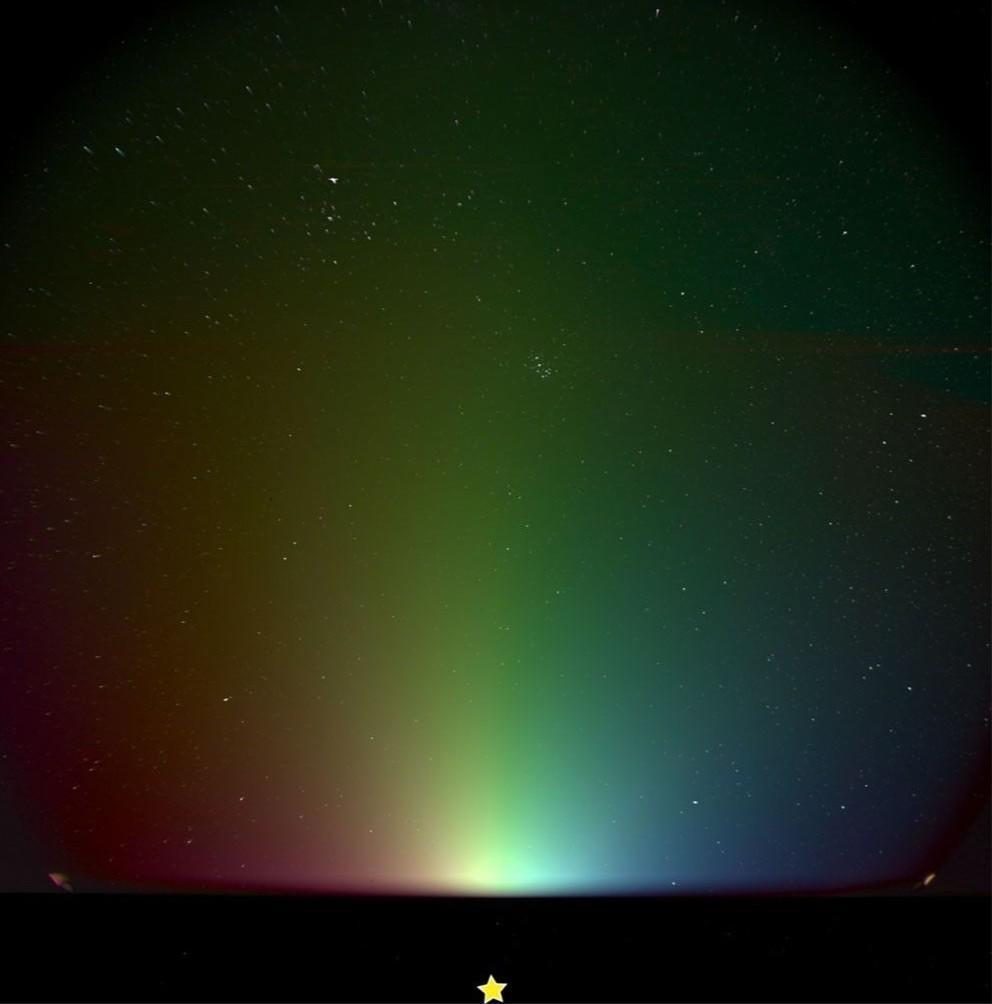
NASA’s Sun-Studying Spacecraft Captures Space Rainbow
In a breathtaking display of celestial beauty, NASA’s Polarimeter to Unify the Corona and Heliosphere (PUNCH) mission has captured a stunning image of a rainbow-like phenomenon in space. The extraordinary view showcases the colorized zodiacal light, created by sunlight reflecting off dust particles orbiting the Sun. This extraordinary achievement is a testament to the mission’s cutting-edge technology and its ability to capture the Sun’s outer atmosphere in unprecedented detail.
The PUNCH mission, launched in 2023, is dedicated to studying the Sun’s outer atmosphere, also known as the corona, and its transition into the solar wind. To achieve this, the spacecraft is equipped with a unique instrument called the Wide Field Imager-2 (WFI-2), which is capable of capturing images through all three of its polarizers in succession. This allows scientists to analyze the light reflected by the dust particles in the zodiacal cloud, which surrounds our solar system.
The WFI-2 instrument took a series of images, each filtered through one of the three polarizers, and then combined them to create a single image that showcases the rainbow-like phenomenon. This innovative technique provides scientists with valuable insights into the properties of the dust particles and the way they interact with sunlight.
The resulting image is nothing short of breathtaking, with vibrant shades of orange, yellow, and pink hues dancing across the blackness of space. The colors are a result of the different wavelengths of light being reflected by the dust particles, which are illuminated by the Sun’s intense radiation.
“This is the first time we’ve been able to capture an image of the zodiacal light in such detail,” said Dr. Diego Garcia, the PUNCH mission’s principal investigator. “The WFI-2 instrument is a game-changer for our mission, allowing us to study the Sun’s outer atmosphere and its interaction with the solar wind in ways that were previously impossible.”
The PUNCH mission is an important step in understanding the dynamic interactions between the Sun’s corona and the solar wind. The corona is a region of intense heat and energy, where the Sun’s magnetic field is twisted and tangled. The solar wind, on the other hand, is a stream of charged particles that flows away from the Sun, influencing the magnetic fields of planets and other objects in the solar system.
By studying the zodiacal light, scientists can gain valuable insights into the properties of the dust particles and the way they interact with the solar wind. This information can help us better understand the complex dynamics of the Sun’s outer atmosphere and its impact on the solar system as a whole.
The PUNCH mission is not just limited to capturing stunning images of space rainbows. The mission’s scientists are also using the WFI-2 instrument to study the corona’s magnetic field and its interaction with the solar wind. This information can help us better understand the Sun’s internal dynamics and the way it affects the solar system.
As the PUNCH mission continues to explore the Sun’s outer atmosphere, it is likely to capture even more breathtaking images of the zodiacal light and other celestial phenomena. With its cutting-edge technology and innovative approach, the PUNCH mission is pushing the boundaries of our understanding of the Sun and its impact on the solar system.






